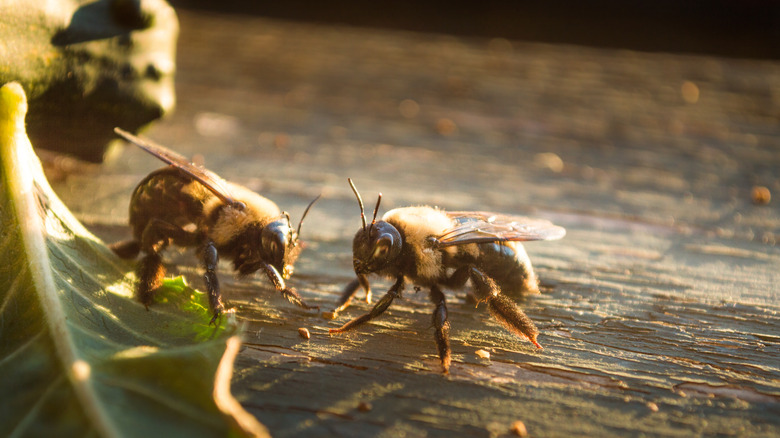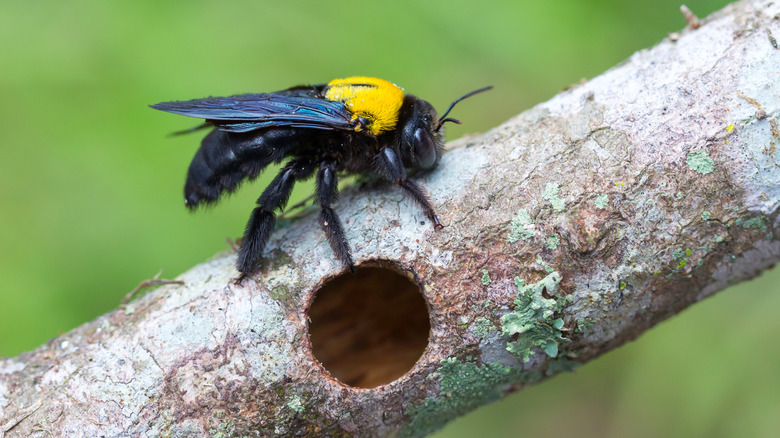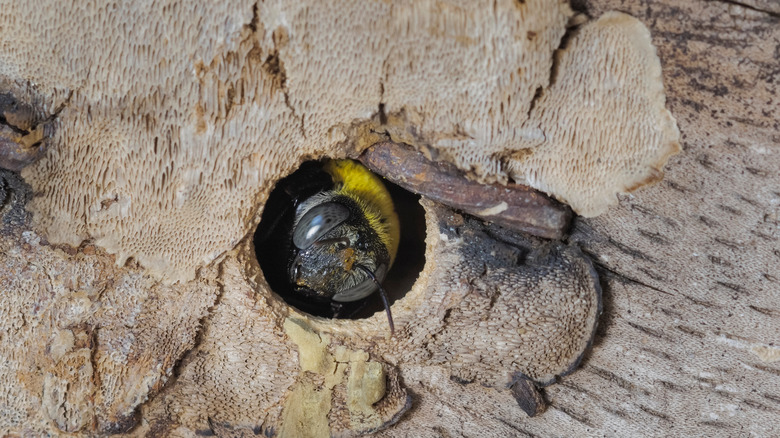How To Get Rid Of Carpenter Bees From Your Home
If you own a home, you probably already know the importance of getting rid of pesky wood-loving insects like termites and carpenter ants. However, there are other highly destructive insects that you should watch for, like carpenter bees.
Carpenter bees are among the most destructive wood-damaging insects found in the United States, which means you don't want them near your home. They don't actually eat the wood like a termite would, but instead they create tunnels in wood for nesting purposes. These tunnels can weaken the structure of your home by damaging the wood from the inside and can lead to moisture damage. The good news is that carpenter bees typically don't live in huge colonies like other types of bees, so the removal process isn't as involved.
Trying to remove carpenter bees without harming them is an important step because these insects do pollinate plants, including flowers and vegetables that you may have in a garden near your home. Ideally, you should convince these insects to migrate away from your home and build their nests in areas with trees away from the house, as their natural habitat involves nesting in rotting wood and dead trees.
How to spot the presence of carpenter bees
Before taking steps to deter these insects, you want to be certain that you are seeing carpenter bees — you don't want to chase away other helpful insects by mistaking them for carpenter bees.
Carpenter bees can be ¼ inch to 1 inch in length and they often have some yellow coloring near the head. Males of this species do not sting, although they may appear aggressive around humans who are near the nest. Females will sting, but they rarely do, and they tend to stay closer to the nests inside the wood.
The easiest way to spot these types of insects is through the damage that they are causing. Carpenter bees bore into natural wood. They tend to prefer softwood like pine and cedar, although they may also attack some untreated hardwood. The visible holes they create are often perfectly round and measure about ½ inch in diameter. They then live and nest inside these holes, and some of the insects will reuse the same holes year after year. Because of this habit, you may want to use wood putty or caulk to plug the holes in the fall when the insects are less active.
Best ways to remove carpenter bees from your house
Because it's best to remove the carpenter bees without killing them so that they can continue to provide pollination to your garden, using a pesticide isn't advised. Fortunately, there are proven methods of chasing away these insects in a safe manner. These insects tend to dislike vibrations and sound, so you could place a speaker near the nest for a few days to drive them away.
Oils like citrus and almond oil can repel carpenter bees, causing them to move on to other areas. They can be mixed in a spray bottle and sprayed on the affected wood to deter further bee activity. For a more permanent solution to repelling carpenter bees, consider painting, as these insects prefer to drill into rough, unfinished wood, rather than painted wood. You can also attach a mesh screen on top of the wood to keep carpenter bees away or use a carpenter bee trap that attracts the insects and keeps them trapped inside until you are able to relocate them. But if you simply can't seem to put a stop to the problem, you may want to call a pest exterminator that has experience with relocating bees.


